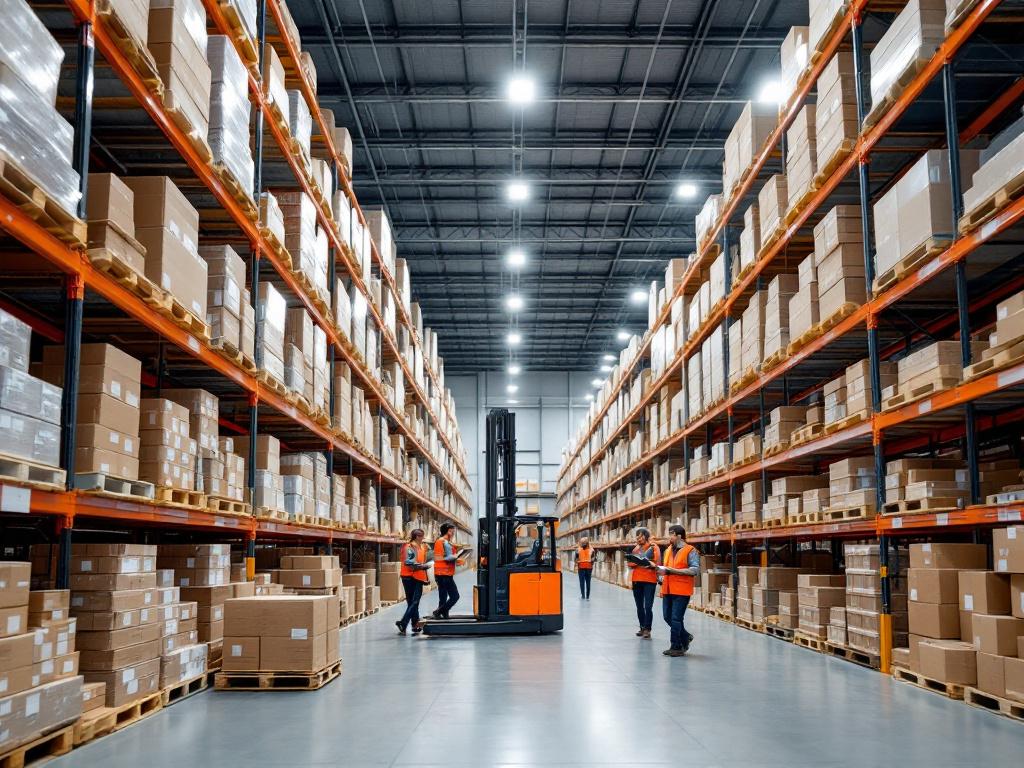In the evolving landscape of supply chain management, businesses face a critical choice between Third-Party Logistics (3PL) and In-House Logistics. This article delves into both options, exploring their advantages and disadvantages, to help you determine which solution best aligns with your operational needs and strategic goals.
Understanding Third-Party Logistics
Third-Party Logistics (3PL) refers to the use of external firms to manage logistics and fulfillment services for businesses. As supply chains become increasingly complex, 3PL has emerged as a critical player, facilitating efficiency and allowing companies to focus on their core competencies. The importance of 3PL in modern supply chains cannot be overstated; it helps businesses adapt quickly to market changes, enhances scalability, and reduces overhead costs.
3PL firms typically offer a range of services, including:
– **Warehousing:** Providing storage solutions to meet fluctuating demand.
– **Transportation:** Managing the movement of goods from suppliers to customers.
– **Value-Added Services:** These include packaging, assembly, and inventory management.
The growth of the 3PL market is significant, driven by businesses seeking to streamline their logistics functions and improve operational reliability. By outsourcing logistics, companies can leverage specialized expertise and technology that might otherwise hinder their growth, making 3PL an attractive option in today’s fast-paced market environment.
The Mechanics of In-House Logistics
In-house logistics refers to the management of logistics operations by a company’s internal team rather than outsourcing to third-party logistics providers. This approach allows businesses to maintain comprehensive control over their supply chain processes, ensuring that every aspect aligns closely with their strategic goals. By managing logistics internally, companies can implement tailored solutions that directly address their unique operational needs, leading to potentially higher efficiency and improved service levels.
However, this control comes with its own set of challenges. In-house logistics can be resource-intensive, requiring significant investments in infrastructure, technology, and personnel. Companies must also possess specific expertise to navigate complex logistics processes effectively. Additionally, as market demands evolve, maintaining an in-house logistics operation might hinder flexibility and responsiveness compared to leveraging specialized 3PL services. Ultimately, organizations need to consider these factors carefully when deciding between in-house management and outsourcing logistics functions.
Cost Analysis of 3PL vs In-House Logistics
Choosing between Third-Party Logistics (3PL) and in-house logistics involves a thorough cost analysis, as financial implications can significantly impact overall business strategy. Both options entail fixed and variable costs, but they manifest differently.
In-house logistics often incurs substantial fixed costs, including warehouse leases, equipment purchases, and salaries for logistics staff, while variable costs, such as transportation and utility bills, fluctuate with order volume. Conversely, 3PL typically requires minimal fixed costs, as the provider handles these aspects. The variable costs involve paying for services on a per-usage basis, which can lead to more predictable monthly expenses.
To perform a comprehensive cost-benefit analysis, businesses should list all associated costs for both options and forecast return on investment. Besides direct costs, consideration of service quality, technology investments, and scalability can influence the overall value derived from each approach. A well-informed analysis helps in aligning logistical choices with broader business objectives.
Flexibility and Scalability Considerations
When considering flexibility and scalability, third-party logistics (3PL) often outshine in-house logistics due to their inherent adaptability. 3PL providers are structured to handle fluctuations in demand, allowing businesses to scale operations up or down without the burden of fixed overhead costs. For instance, during peak seasons, a company can easily increase its logistics capacity by leveraging the extensive network and resources of a 3PL provider, which can accommodate sudden spikes in demand more efficiently than an in-house system.
Conversely, in-house logistics can face limitations when quick adaptations are necessary. The investment in fixed assets and workforce elasticity may hinder an organization’s ability to respond rapidly to market changes. A great example is a retail company that switched to a 3PL provider during a holiday season surge, resulting in a 30% quicker order fulfillment rate compared to its previous in-house setup. This case underscores how third-party logistics can significantly enhance operational flexibility and scalability, especially in dynamic market environments.
Impact on Customer Service and Delivery
The choice between third-party logistics (3PL) and in-house logistics significantly impacts customer service and delivery times. 3PL providers typically possess established networks that enhance delivery efficiency. Their pre-existing relationships with transport carriers, warehousing facilities, and customs brokers enable quicker shipping and more accurate tracking, often leading to faster order fulfillment. With advanced technology and infrastructure, 3PLs can streamline processes and offer scalability that meets fluctuating demand.
In contrast, in-house logistics can offer personalized service and direct control over operations. An in-house team deeply understands company products and customer expectations, enabling tailored solutions and faster problem resolution. While this can enhance customer satisfaction, it can be limited by resource allocation and potentially slower reaction times during peak periods. Ultimately, businesses must evaluate their customer service priorities: whether they favor speed and efficiency through a 3PL or the personalized touch of an in-house team, aligning this decision with their long-term strategic goals.
Making the Right Choice for Your Business
When selecting between third-party logistics (3PL) and in-house logistics, businesses must consider several critical factors. A thorough evaluation begins with assessing **company size**: larger organizations might benefit from the scalability of 3PLs, while smaller businesses may find efficiency and control in managing logistics internally.
**Distribution needs** are equally important; companies anticipating rapid growth or seasonal fluctuations may favor 3PL providers for their flexibility. **Market conditions**, including competition and customer expectations, should also guide decisions: a volatile market may necessitate the agility that 3PLs can provide.
Furthermore, businesses should align their logistics structure with their **long-term strategy**—whether prioritizing cost-cutting or a focus on customer-centric innovations.
Key strategic questions business leaders should ask include:
– What are our current and projected logistics volumes?
– How critical is logistics to our overall customer experience?
– What resources and expertise do we currently have in-house?
– How do our logistics needs align with market trends and technology developments?
This framework will facilitate a more informed decision that aligns logistics with business goals, enhancing both operational efficiency and customer satisfaction.
Conclusions
Choosing between Third-Party Logistics and In-House Logistics presents businesses with unique advantages and challenges. By carefully evaluating cost, flexibility, and customer service implications, companies can make informed decisions that align with their specific operational strategies, ultimately enhancing their supply chain effectiveness.


